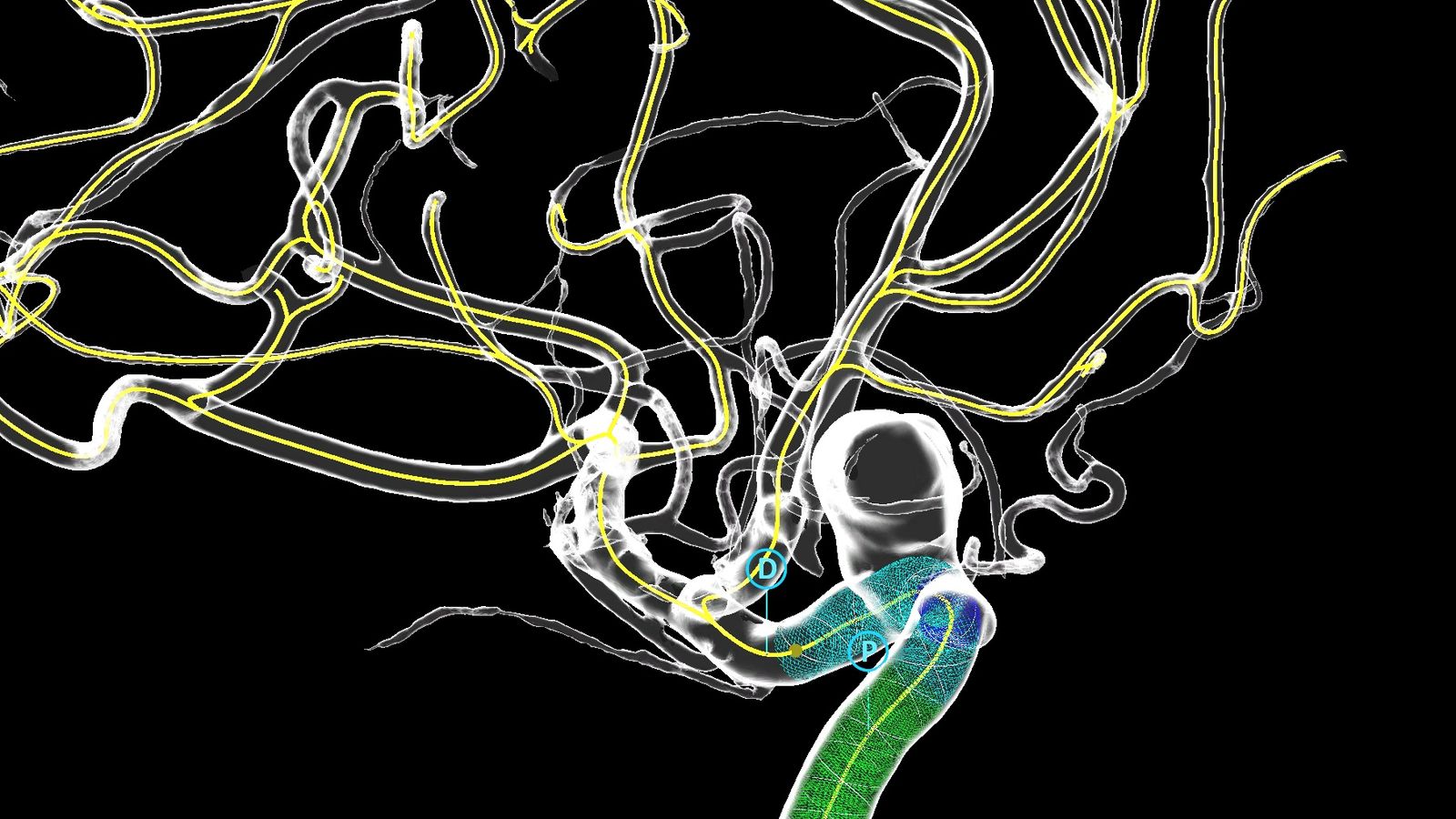
AI-Driven Technology Promises to Revolutionize Aneurysm Treatment
In the world of medical innovation, a groundbreaking software platform powered by artificial intelligence, known as PreSize, has emerged as a promising solution that could transform the treatment of brain aneurysms. This cutting-edge technology, which combines medical expertise with the computational power of AI, has demonstrated its potential in enhancing the precision and safety of aneurysm treatment, outperforming even experienced neurosurgeons.
A brain aneurysm is a potentially life-threatening condition characterized by a weak or thin spot on a blood vessel wall in the brain that fills with blood. When left untreated, these aneurysms can burst, causing severe medical emergencies. One established method to mitigate the risk of rupture is the deployment of a stent, a mesh tube designed to divert blood flow and reduce the pressure on the aneurysm. Ideally, this intervention allows blood to clot and the aneurysm to dissolve over time.
However, the challenge lies in precisely placing the stent. Dr. Katerina Spranger, the founder of Oxford Heartbeat, the firm behind PreSize, explains that there is currently a significant degree of uncertainty and guesswork involved in this procedure. Stents are inserted via a catheter in the groin, guided by X-ray imaging, but the margin for error is considerable. If the stent is undersized, it can detach from the blood vessels, potentially becoming a dangerous, wandering entity within the circulatory system. Conversely, if it’s oversized, it can exert excessive pressure on the vessel, posing a risk of rupture.
PreSize offers an innovative solution to this problem by providing an accurate image of the patient’s brain, along with “digital twins” that simulate the behavior of a stent within the patient’s unique anatomy. This simulation helps predict how a specific stent will function in a particular location, thus reducing the element of uncertainty. Importantly, the program can be used in the operating room to experiment with various stents to determine the optimal choice. This capability is invaluable, as even a fraction of a millimeter can have a significant impact on the success of the surgery.
The initial success of PreSize is notable, as it has been utilized in over 375 operations involving patients in the UK, Germany, Finland, and Ukraine. The potential of this AI-driven technology is underscored by the National Institute for Health and Care Research (NIHR), which recognizes the vast possibilities of AI in accelerating diagnosis and treatment while improving patient outcomes. The NIHR, in collaboration with the NHS AI Lab, is actively supporting AI projects like PreSize to gather the necessary evidence for the broader adoption of such technologies within the healthcare system.
A study published in the BMJ Journal of Neurointerventional Surgery further validates the advantages of PreSize. It revealed that the AI-powered platform exhibited a remarkable accuracy rate of 95% in predicting the optimal placement of a stent within the brain. In comparison, human clinicians achieved an average accuracy rate of 81%. Dr. Spranger emphasizes the need for additional research to ensure the safety and effectiveness of this technology before widespread deployment, stating that while AI holds the potential to revolutionize healthcare, thorough testing and accountability are essential to address any concerns or distrust regarding AI’s role in medical treatment.
Thank you for entrusting us as your source of information. Together, we aim to shape a world where knowledge transcends borders and unites us all. Stay focused, stay informed, and let’s make our world a better place, one story at a time.



